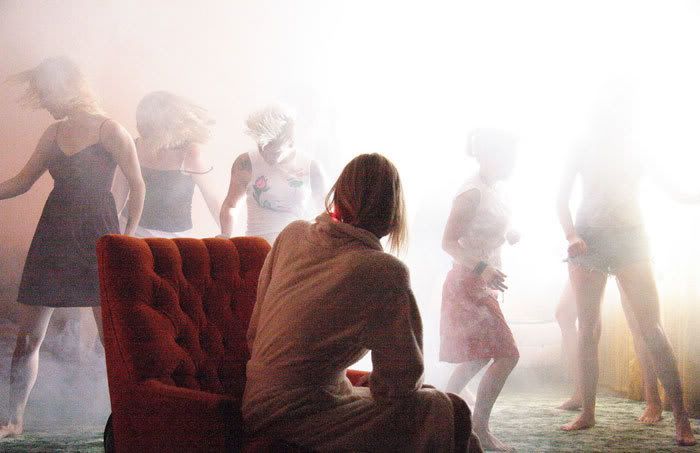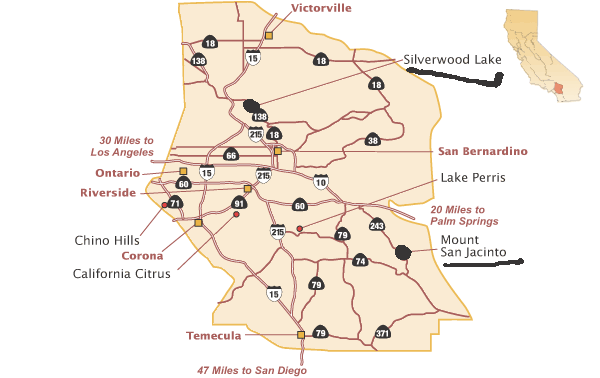EMPIRE Burlesque, or: Obfuscation and Its Discontents

by Stephen Farrell
I’ll be the first to admit it: I’ve never been a huge David Lynch fan. I don’t mean that in a sarcastic way, like I’m understating my dislike for the man and his work, I mean it to be taken at face value: I’ve never been a huge David Lynch fan. I’ve seen Blue Velvet and Lost Highway and a smattering of Twin Peaks episodes back when they used to show reruns on cable, but other than that I don’t have too much knowledge of his work. INLAND EMPIRE is without a doubt the most “difficult” Lynch film I’ve seen, and is probably one of the more bizarre cinematic experiences I’ve ever had. It is also maddeningly hard to describe. It is ostensibly a story about an actress and the role she lands in a film which turns out to be cursed, but to call it a “movie-within-a-movie” would be an absurd understatement. Is it about
It seems that with this type of film, where there is no coherent narrative, where identities are unstable and dialogue tends to conceal more than it reveals, the best way to watch it is simply to sit back and let it wash over you, to allow the images and sounds and symbols to hit you on a visceral level and work their magic in the unlit corners of your subconscious. The problem is, every scene, every moment of INLAND EMPIRE is so obscure, so murky and ambiguous, I found my cerebrum working twice as hard just trying to figure out what it was all about, searching for clues in the sets, in the actors’ words, in the silences. Exposition being more or less jettisoned after the fourth or fifth scene, I spent the rest of the film scouring every detail and word, constantly trying to fit them into the semblance of plot that existed in those initial few minutes. Knowing that linear narrative is not going to supply a framework for the piece, every visual cue becomes a symbol and every furtive glance a semaphore that must be deciphered if one is to “get it.”
And that’s the problem with David Lynch movies. People like to say that you either love him or hate him, but that’s not true. No, with Lynch, you either get it or you don’t. For every one of his films (and indeed, for his oeuvre as a whole) there are always those who champion it as the most brilliant, creative, evocative work of art since…well, since the last one. And then there’s everyone else, divided between those who don’t get it, those who didn’t see it, and those who don’t know who the fuck David Lynch is (most of the moviegoing public). The problem is, among those who do see his movies, there can’t be any dialogue between the two groups, because those that get it will consider any criticism from those who don’t get it to simply be due to the others’ not getting it. Those that don’t get it will, for their part, think that anyone who gets it must be a dishonest, pretentious fanboy. And they’re both right.
David Lynch has been vocally silent about how he wants INLAND EMPIRE, and in fact all his films, to be interpreted. This is of course the right thing to do. The creator of a work has said all he or she needs to say about it in the work itself; talking about it or offering interpretations for one’s work implies that something has been left out. And as I explored in a previous post on this site, ambiguity is something which I greatly appreciate in storytelling. But ambiguity is not an end in itself. Without a concrete grounding in reality and narrative, the flights of fancy become meaningless. Surrealism must juxtapose familiar symbols in unexpected ways; if the symbols are not familiar or non-representative, it is abstractionism. People often talk about David Lynch’s work having a “dreamlike” quality, and this is particularly true of INLAND EMPIRE. The non-sequitor dialogue, haunting imagery and muted digital color palate all lend themselves to this. But just as one wakes from a dream perhaps disturbed but resigned to go on with life without learning what it all means, one leaves INLAND EMPIRE shaken and intrigued, but left without much to work with in making sense of it all. Or maybe I just don’t get it.





Man, your summary of the frustrations you had in comprehending the film and Lynch's intentions pretty much sums up why I've hated every movie of his for the past fifteen years (until this one). Like, I don't have a problem with surrealism or non-linear plot or weird shit, but it has to come together on some level to be a complete work. Doubtless, I think in Lynch's mind and to his fans, movies like Lost Highway and Mullholland DO come together and connect perfectly, if you put together the pieces and symbolism and blah blah blah. I've tried hard, though, and been willing to give the benefit of the doubt in those cases, and those films still just don't come together in the end...or if they do it is only by a stretch of the viewer's imagination, not because they were well executed artistically.
ReplyDeleteAs for INLAND, just do what I did. Sneak in a six-pack of Miller High Life tall cans and stop worrying about all that pesky comprehension. Nice work, though...
Assume that "writing" refers to all texts, which everything is, no doubt:
ReplyDelete"In the multiplicity of writing, everything is to be disentangled, nothing deciphered; ... the space of writing is to be ranged over, not pierced"
-- Roland Barthes, Death of the Author
SO! It's an entirely different way of reading, basically. You said yourself "The creator of a work has said all he or she needs to say about it in the work itself" which gets at the way to read it: how does it work? Looking for symbols means there's something outside the text you're trying to bring in; I'd say there are signs to look at and notice but symbolism is a tricky, narrow word. For instance, the rabbits are obviously some kind of sign, right? What are they doing? Whenever they open that door, or answer the phone, they're engaging the rest of the picture so they're not supposed to be representative of anybody else in the movie; they're some kind of gag at the most base level but also another mode of marriage and acting and inter-personal relations, I think. But they're the least interesting thing there, probably. More interesting are those hotties from hell, or the "confession" scene, or Crimp and how he works into each level of storytelling.
Thank you for giving up (almost) three hours of your life to this movie, Stephen. I hope you enjoyed it a little...and don't hate me. Your account is valid, too, and if you don't get it -- and don't really care to get it -- so be it. I can cherish it. itititititititit.....
Did you watch the whole end credits? I think they're pretty "sweet"...
I understood that Lynch's title was a reference to the Pacific Northwest's Inland Empire, not California's. Since that's where Lynch grew up, and all.
ReplyDeleteYes and no, but the yes is a tenuous, spiritual one. No, because, some, if not all of the film plays out in The Valley (as well as Poland, another landlocked country).
ReplyDeleteBut really, the title's all about the interior of the individual, and not just whomever Laura Dern is playing.
Thanks for the comments, guys.
ReplyDeleteLO--Yeah, I don't doubt that for Lynch and Lynch fans, the pieces and symbolism come together and form a meaningful work of art, I'm just not sure how much work one should have to put into it, you know? I mean, you can see symbols and meaning in anything if you look hard enough, and it just seems like it's sort of like reading tea leaves or something, one person can see prophesies where another just sees randomness. I think a second viewing would be good for me in just viewing the film on a visceral level, and the pieces would no doubt fall more into place because I'd know what to look for. And maybe the champagne of beers would help too.
Rylie--I think maybe I meant signs when I said symbolism, because I agree that things in the movie should not be understood as referring to things outside the text. So when I say I struggled to interpret IE, I was struggling to make the connections between various elements of the film and other elements of the film, not with outside elements. If that makes any sense at all.
But another problem with trying to experience a film like this on a purely sensational level and not overthink it is that for me at least, when I let my conscious mind go I can't help but think about things like context, authorial intent, and the fact that Laura Dern is really a paleobotanist. It's only through close attention to the signs and symbols that I can really get into Lynch's internal logic. But perhaps "logic" and "David Lynch" are mutually exclusive concepts.
Also, thanks for the pic. I guess the map represents my literal mindedness or something...
There IS a "logic" but it's not some Aristotilean syllogism, you know? And it's not simply a "dream" logic. I really think if you read some Borges you'll get into how Lynch's movies work. Then again, Lynch films clicked for me before I ever wrestled with Ficciones. I dunno... maybe I'm just a silly fanboy; albeit, one with strong reading skills. The gist: a Lynch film is a "network of possibilities" with endless readings given all the signs and oddities, one which shouldn't take too much effort, really, to sort out and observe how it operates. If you want to see it again, and you're up here, and it's still playing, I'll go with you.
ReplyDeleteOne other thing I thought about, that kind of pertains to how to deal with the obfuscation, or, how I dealt with it, and read it. I used the word "maze" in my review when "labrynth" could have worked, too, but I like "maze" because it lends an idea of getting to an end, which this film definitely does. It goes left and right and up and down and backwards before forewards but it seems like a quest. A labrynth is an ever-evolving space that continually tricks its inhabitants (much like this movie) but I always get the sense that labrynths are inescapable; a maze seems surmountable. But, once again, I'm blabbering about semantics...that make sense?
(Also, yeah, I kept the map cuz I liked it but I thought for the lead pic we needed something from the movie.)